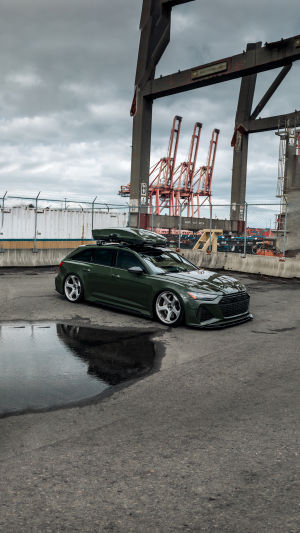The station wagon, also known simply as "wagon," is derived from a sedan, with its rear cargo area extended upward to the height of the roof, providing additional luggage space. Its appeal lies in combining the comfort of a sedan with ample cargo space.
Station wagons emerged as a vehicle type in response to the human desire for nature exploration and travel. Compared to SUVs and MPVs, station wagons offer lower prices, operating costs, and a more agile body, making them easier to drive and park.
As consumer lifestyles improve, holiday travel with family in a station wagon has become a new trend among urban car enthusiasts. Not only suitable for long journeys, station wagons also provide ample space for carrying travel gear.
The development history of station wagons can be summarized as "born in America, but flourished in Europe." The earliest wagons imitated the structure of horse-drawn carriages, replacing horses with automobile engines and carriage structures with car bodies. For instance, the image below depicts a wooden carriage placed on the chassis of a Ford Model T, forming the structure of a station wagon.
Due to the organized interior structure of station wagons, the earliest "travelling cars" became efficient transportation tools near train stations and ports, initially named "Station-Wagon." However, since the carriage and body often came from different manufacturers, they typically had wooden body structures distinct from regular family cars.
Although the United States was rapidly developing highways nationwide during this period, many roads remained rough and uneven, particularly in mountainous areas where consumers desired a versatile vehicle. It needed to have both cargo-carrying and off-road capabilities without sacrificing sedan comfort.
1935, the Chevrolet Suburban Carryall, a multi-functional vehicle, was introduced. Subsequently, numerous automobile manufacturers gradually shifted from wooden to more durable and cost-effective steel bodies. Once prices became more affordable, more practical station wagons became popular among the public.
During the 1950s, with the economic recovery in Europe and the rising living standards of people, activities such as travel, shopping, picnicking, and skiing became expressions of a high-quality lifestyle. Therefore, it was the perfect time for passenger station wagons that could meet the needs for "large cargo capacity" and "comfort" to shine.
In 1953, Volvo introduced the famous Duett (model DH) based on the PV445, considered the ancestor of today's prestigious, comfortable, and powerful station wagons. Mercedes-Benz plans to introduce the CLA 260 Shooting Brake this year as sedans and SUVs become more commonplace, increasing interest in niche vehicle types like station wagons.
Today, people live in an era of diverse choices. There's no need to agonize over a particular vehicle type because any vehicle type in a mature or maturing market (consumer culture) will gradually grow and adapt.





